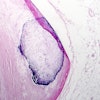
CLEVELAND - Digital image and information management systems can bring major productivity benefits to the hospitals and imaging facilities that install them. But PACS can also be a two-sided sword, and providers should prepare to deal with the sharp edges before they take the plunge.
Such was the message delivered today by Dr. Michael Modic, chairman of the Cleveland Clinic’s department of radiology. Modic gave the keynote address at the opening session of the Symposium for Computer Applications in Radiology. His talk underscored the benefits and pitfalls of the technology; while it's clear that PACS can solve many problems for imaging departments, it can also create problems of its own.
The Cleveland Clinic began installing its PACS some 10 years ago. Since then, the network has evolved into an integrated RIS/PACS that supports voice recognition-based reporting. The system links the main Cleveland Clinic campus with other facilities in the Cleveland area, and also connects to a Cleveland Clinic hospital in Florida.
The Cleveland Clinic began to examine digital image management for competitive reasons. The health system has a number of competitors in the Cleveland area, and wanted to improve its position by making its services available over a much wider region than it was capable of serving without PACS.
"What we wanted to be able to provide was better access than anyone else, better productivity than anyone else, better distribution mechanisms than anyone else, so that for referring physicians, it was transparent to them where the patient went," Modic said. "They never knew where the study was read, as long as the information got back to them in a timely fashion."
In building its PACS, the Cleveland Clinic had several requirements. The facility wanted a common digital infrastructure and viewing stations, so that the system appeared the same to users no matter where they were. The system also needed to be flexible and scalable, able to handle increasing exam volume. Others facilities thinking about installing PACS should look for these features, he advised.
With the PACS installed, the Cleveland Clinic began an ongoing effort to improve its efficiency by analyzing workflow and efficiency at various departments. Modic produced a number of detailed slides showing the impact that PACS has had on personnel productivity.
PACS enables Cleveland Clinic administrators to run the radiology department much as an air traffic controller directs traffic at an airport, he said. Administrators can monitor exam scheduling and in real time are able to direct work to those areas that are being underutilized.
The regionalized nature of the department also enables the system to make better use of its subspecialists, who can read images regardless of where they were acquired, he said. That’s a good thing, due to the failure of a recent effort to place subspecialists at community locations, closer to referring physicians. The Cleveland Clinic found that referring physicians were more interested in dealing with general radiologists who were well versed in a wide range of pathologies, rather than a different subspecialist for each case.
But making its clinical experts available anytime, anywhere has a downside for the person who happens to be one of those subspecialists. Modic, a neuroradiologist, underscored the point with a bit of comedy.
Pretending to be on call, he received a cell phone call in the middle of his presentation notifying him of a brain case that had just arrived at the Cleveland Clinic. He then proceeded to read the images and produce a report using voice recognition, all in a matter of minutes.
While the spoof was an impressive demonstration of the power of electronic communications, it also highlighted how insidiously ubiquitous the technology can become. "There is nowhere to hide," Modic said.
Imaging departments that once had down time overnight are now working around the clock. Radiologists and radiologic technologists are being driven to higher levels of productivity by administrators armed with reams of data -- and that’s not necessarily a good thing. "As we all know in today’s environment, we’re just killing our radiologists when we increase their productivity," he said.
There are other drawbacks to digital image management, he said. For one, it’s hideously expensive. The Cleveland Clinic has fully implemented PACS, but it’s still spending $6 million a year on information technology, an amount that grows every year. Low-paid film library clerks are being replaced by highly paid IT workers. The health system hasn’t seen film use drop, and in fact has only eliminated film in ultrasound, a modality that was never a big user of film in the first place.
And equipment failures that once might have been minor problems now have the potential to reverberate throughout an increasingly interdependent electronic communications system -- with catastrophic results. A failure of the RIS in particular can have serious repercussions across an enterprise, he said.
But many of these drawbacks can be averted, or at least ameliorated to some extent. Training is crucial for everyone who deals with the PACS, especially technologists, he said. Quality assurance workers help make sure that studies don’t disappear into electronic hyperspace. Frequent measuring can help establish benchmarks that help lift the quality and productivity of the entire enterprise.
But occasionally, despite all the planning and preparation, things will go wrong. When that happens, Modic had this advice: "Keep scapegoats handy."
By Brian CaseyAuntMinnie.com staff writer
May 2, 2002
Copyright © 2002 AuntMinnie.com


















